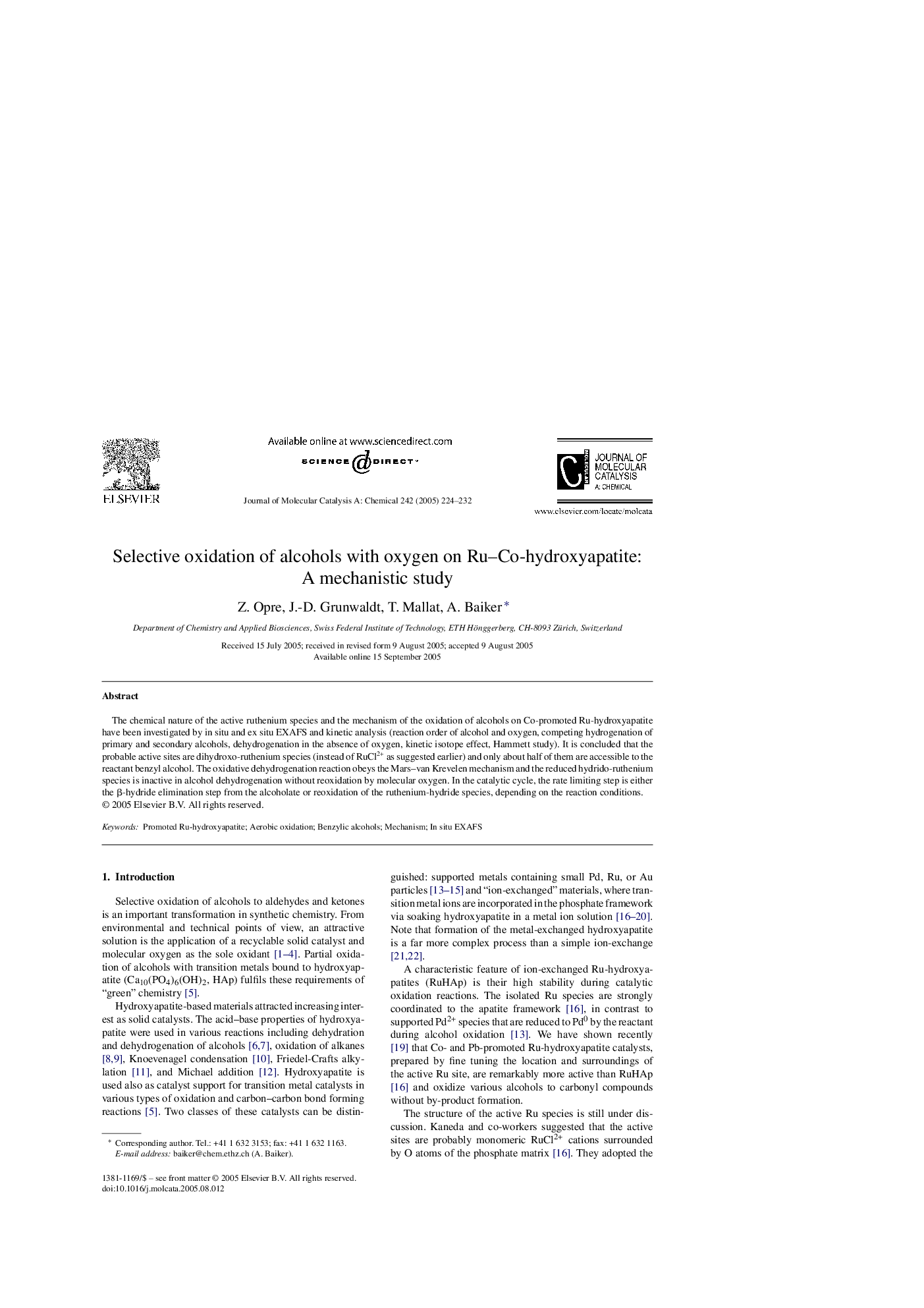| Article ID | Journal | Published Year | Pages | File Type |
|---|---|---|---|---|
| 9614393 | Journal of Molecular Catalysis A: Chemical | 2005 | 9 Pages |
Abstract
The chemical nature of the active ruthenium species and the mechanism of the oxidation of alcohols on Co-promoted Ru-hydroxyapatite have been investigated by in situ and ex situ EXAFS and kinetic analysis (reaction order of alcohol and oxygen, competing hydrogenation of primary and secondary alcohols, dehydrogenation in the absence of oxygen, kinetic isotope effect, Hammett study). It is concluded that the probable active sites are dihydroxo-ruthenium species (instead of RuCl2+ as suggested earlier) and only about half of them are accessible to the reactant benzyl alcohol. The oxidative dehydrogenation reaction obeys the Mars-van Krevelen mechanism and the reduced hydrido-ruthenium species is inactive in alcohol dehydrogenation without reoxidation by molecular oxygen. In the catalytic cycle, the rate limiting step is either the β-hydride elimination step from the alcoholate or reoxidation of the ruthenium-hydride species, depending on the reaction conditions.
Related Topics
Physical Sciences and Engineering
Chemical Engineering
Catalysis
Authors
Z. Opre, J.-D. Grunwaldt, T. Mallat, A. Baiker,
